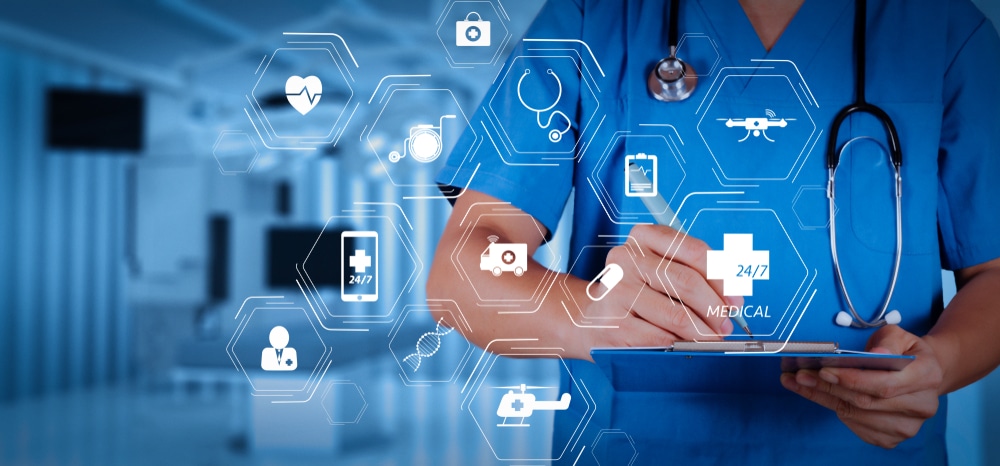The Internet of Medical Things (IoMT) is revolutionising healthcare. With the ubiquity of cellular connectivity, it’s hard to imagine a time when healthcare wasn’t connected. But it wasn’t too long ago that wired medical devices were the norm. Today, patients and providers alike, can access the web on our tablets, laptops and connected devices with wireless technology to improve care delivery and outcomes. Here’s a look at how cellular connectivity has changed healthcare for the better.
What is IoMT?
By combining connectivity to enabled devices, IoMT is helping to bring data collection and analyses to hospitals, GP practices and other healthcare settings in a new way. The use of multi-network SIMs enables greater connection even for remote areas with poor network access, allowing healthcare professionals to carry out new practices like smart devices that monitor if a patient falls. IoMT provides healthcare professionals the ability to provide a more individualised form of healthcare by collecting data directly from patients and administering care accordingly.
In addition, this increased connectivity opens up new opportunities for healthcare providers to collaborate more seamlessly in the care of their patients. It also enables them to expand access to care, regardless of distance or geographic boundaries, while allowing patients greater control over their own health management. All in all, technology has enabled us to rethink our approaches to healthcare, opening up new possibilities never before thought possible. Making IoMT an invaluable tool for providing the best possible care in any given situation. IoMT is becoming more commonplace in everyday healthcare services and it’s exciting to see its potential for improving the quality of life for everyone.
Security and IoMT
Having access to sensitive data in healthcare is a huge risk, which creates privacy and security concerns because it processes and transfers patient personal information. While IoT technology has tremendous benefits for improving patient care, many IoT medical devices lack strong security. In general, every internet-connected device poses a potential security risk that, depending on the threat vector, could result in a security incident or data breach. An entrance point into the infrastructure of a healthcare organisation may be associated dangers. Medical IoT device exposure can further endanger data and systems or jeopardise patient safety due to lax or inadequate security controls, including insufficient security testing.
Security is a top priority in healthcare, with certain measures necessary to protect both patient data and the security of medical professionals. Security measures include an encrypted machine-to-machine infrastructure, and a reliable virtual private network (VPN) are an integral part of secure and reliable connectivity for the IoMT (Internet of Medical Things). VPNs have the ability to connect to various networks securely by using a single, unique identity. In addition, VPNs also provide multiple layers of encryption to ensure that all data is highly secure and protected from threats or vulnerabilities to ensure that data is kept safe and secure. With security threats on the rise, such security measures are essential in safeguarding healthcare information while also maintaining a high level of service in protecting both healthcare workers and patients alike.
There is a solution for everyone, from monitoring devices to bed sensors to remote patient trackers. the telehealth sector is expanding at a rapid rate. Here at Ritesim we work closely with you to provide your with the best connectivity solution for you and with hundreds of roaming agreements in 200+ countries, we’re confident in our premium cellular IoT connectivity.
Get in touch using the form below to find out more.



